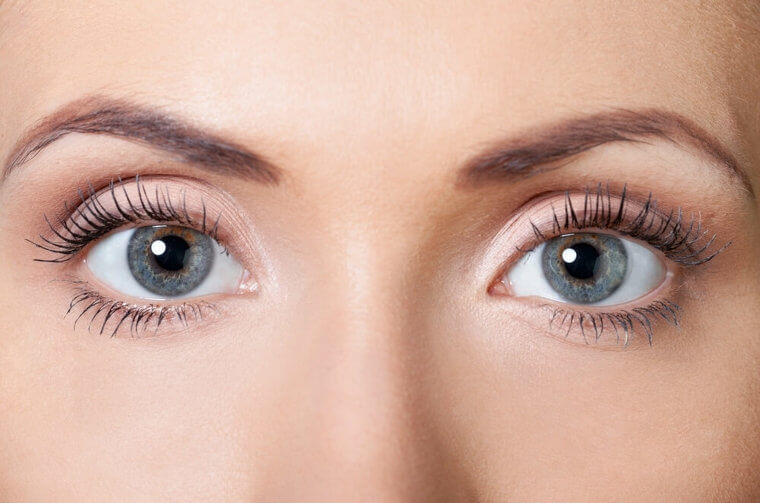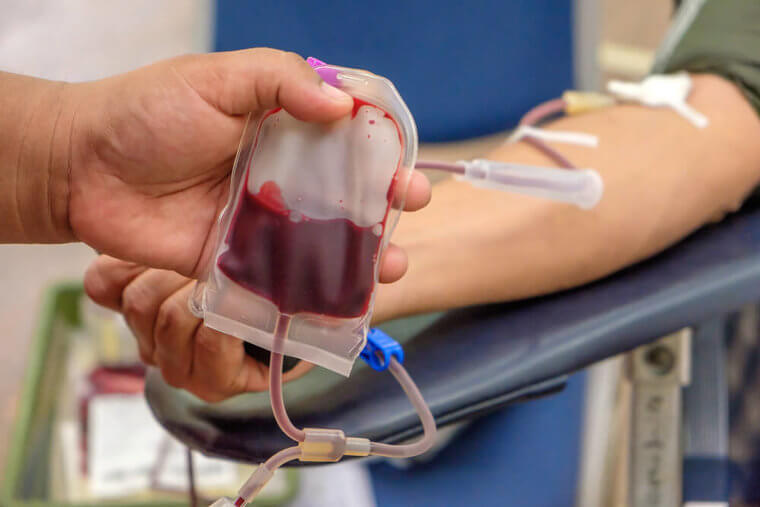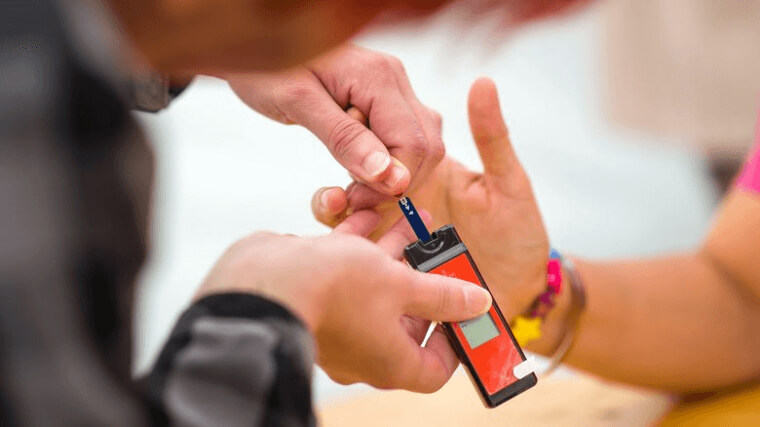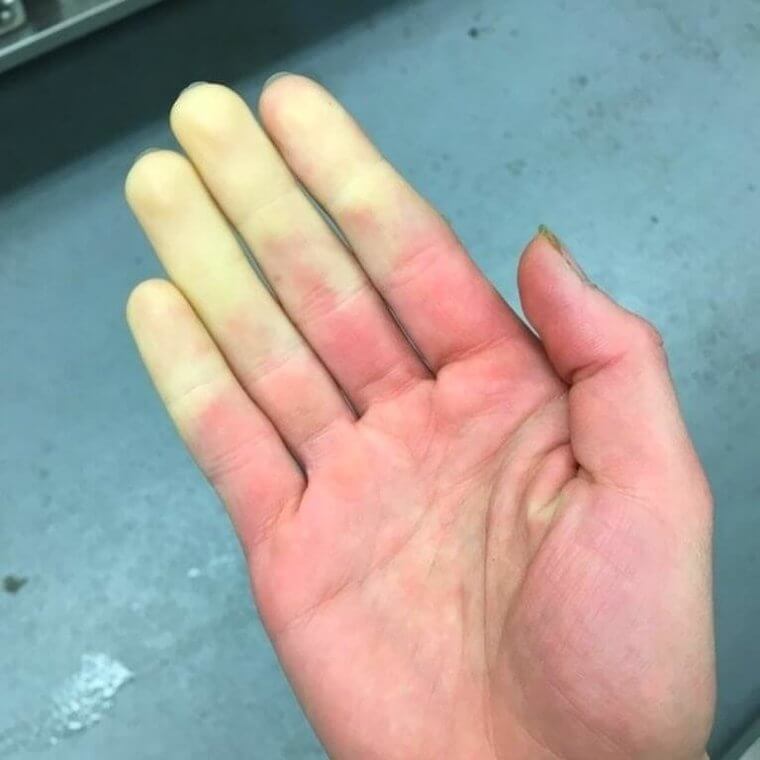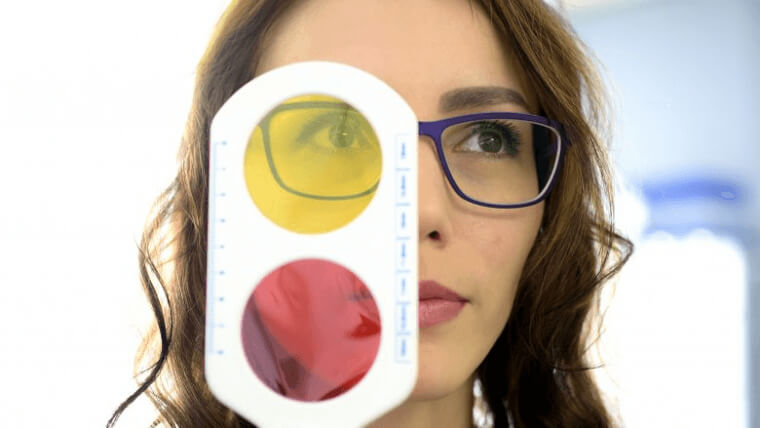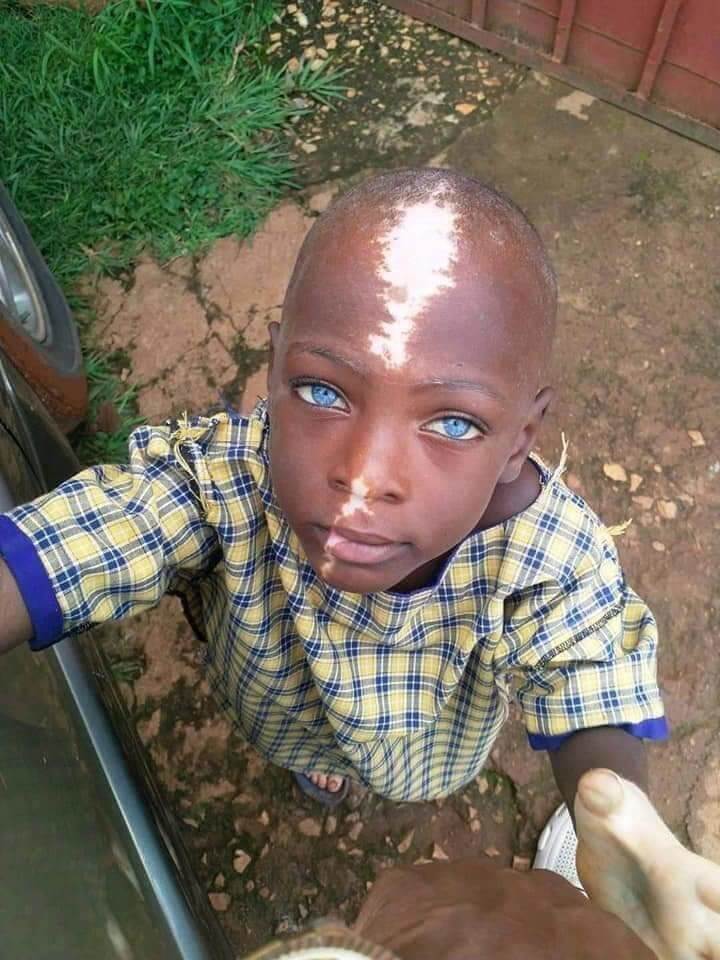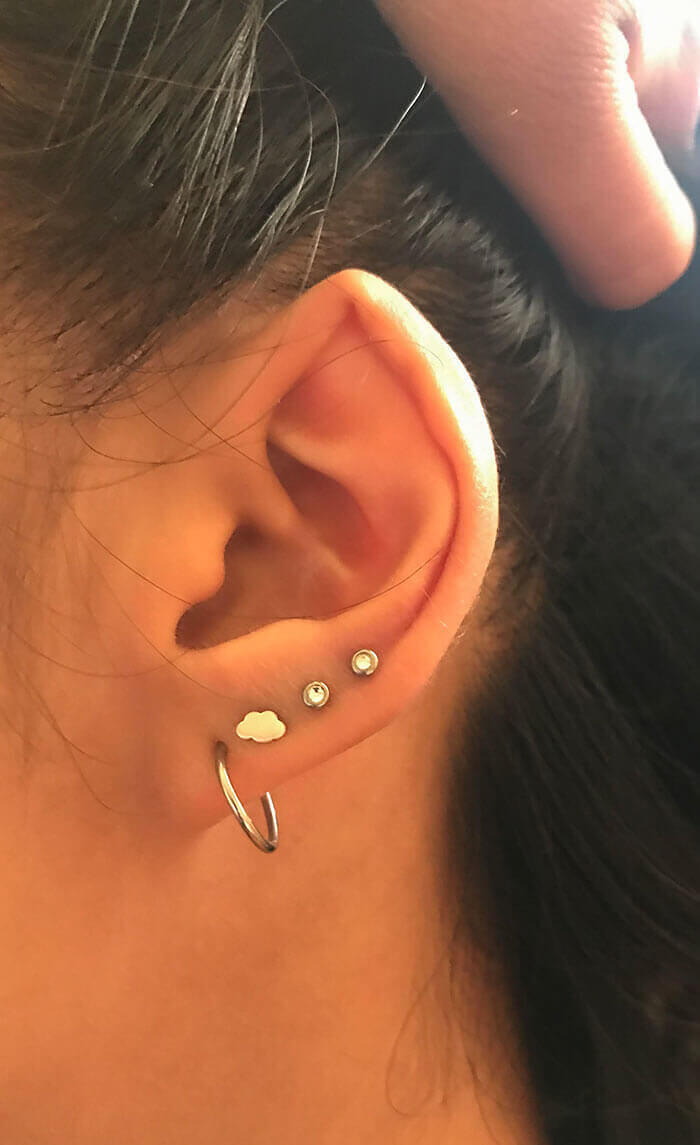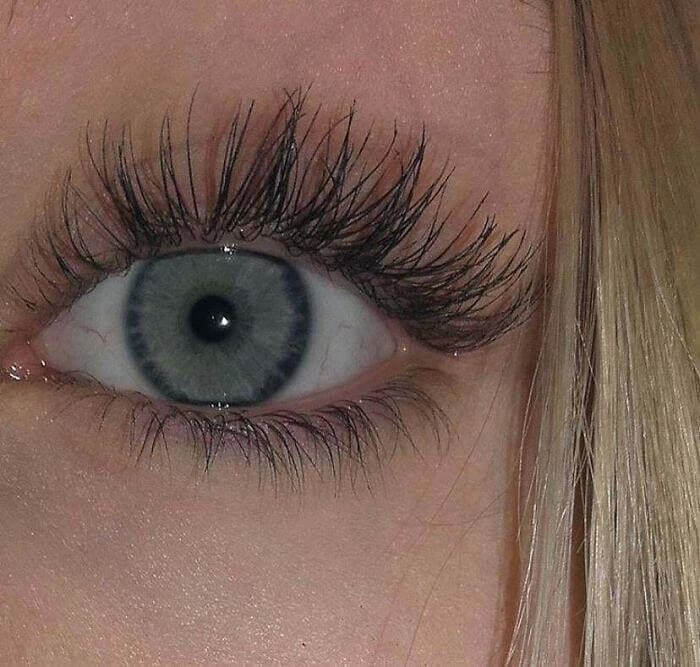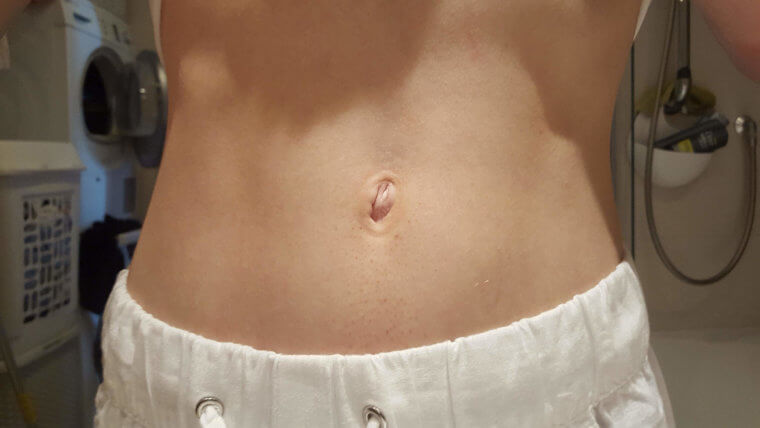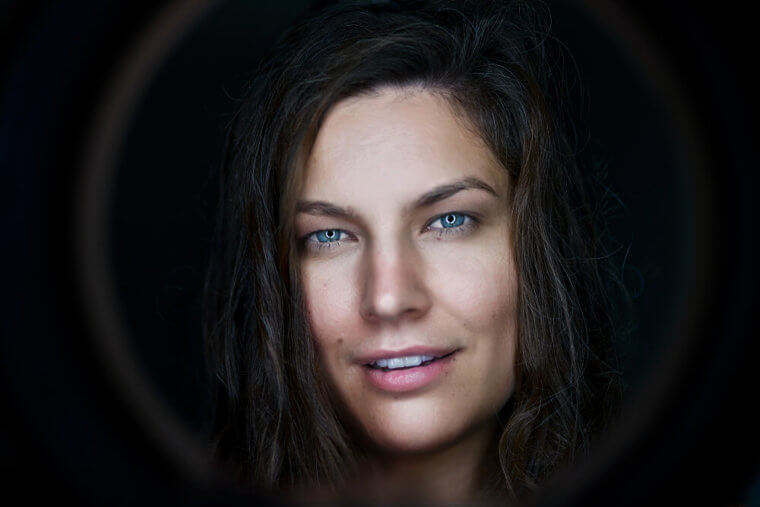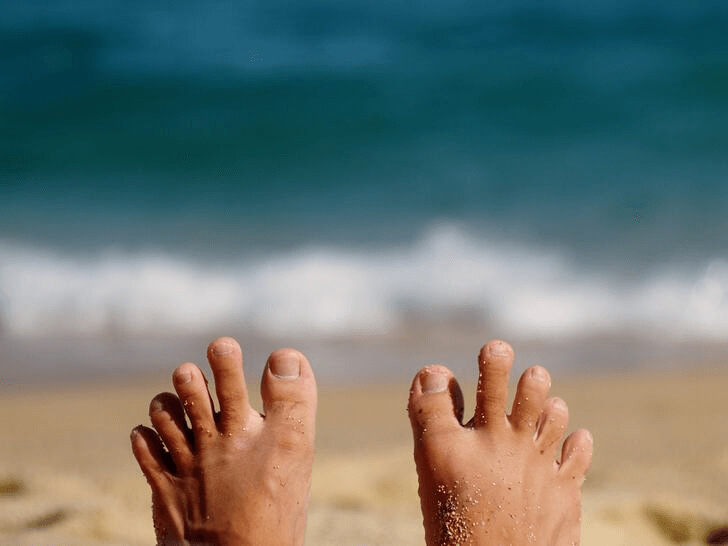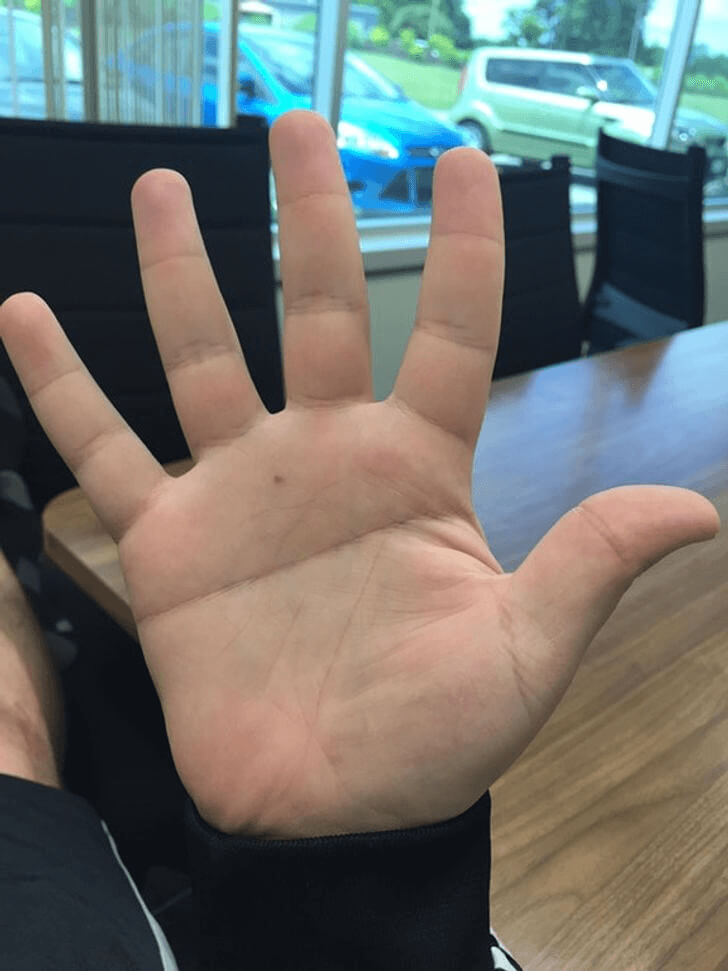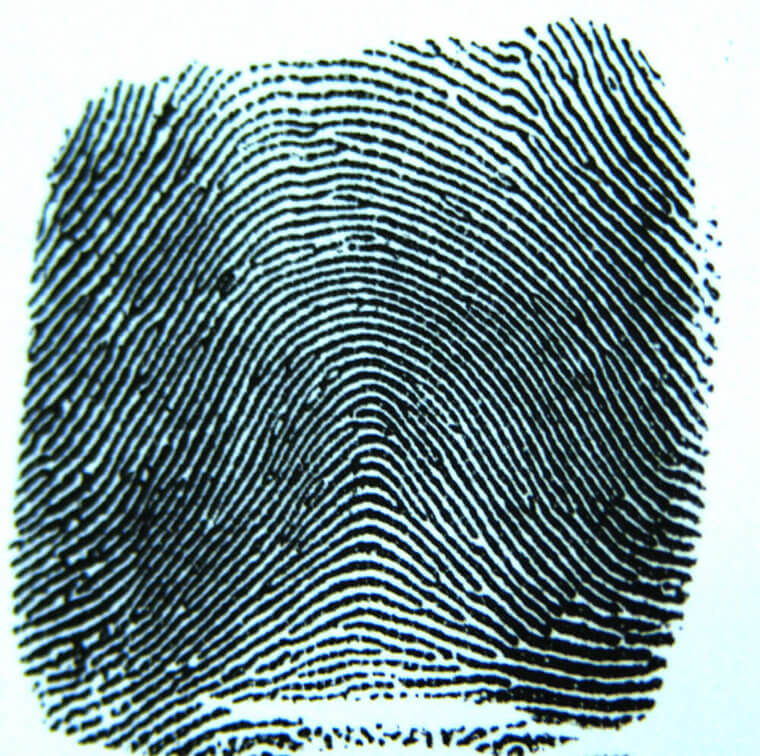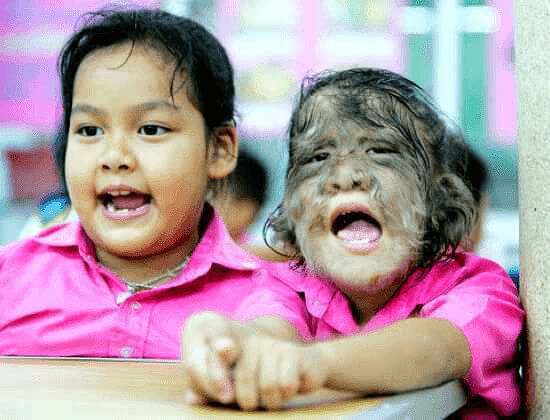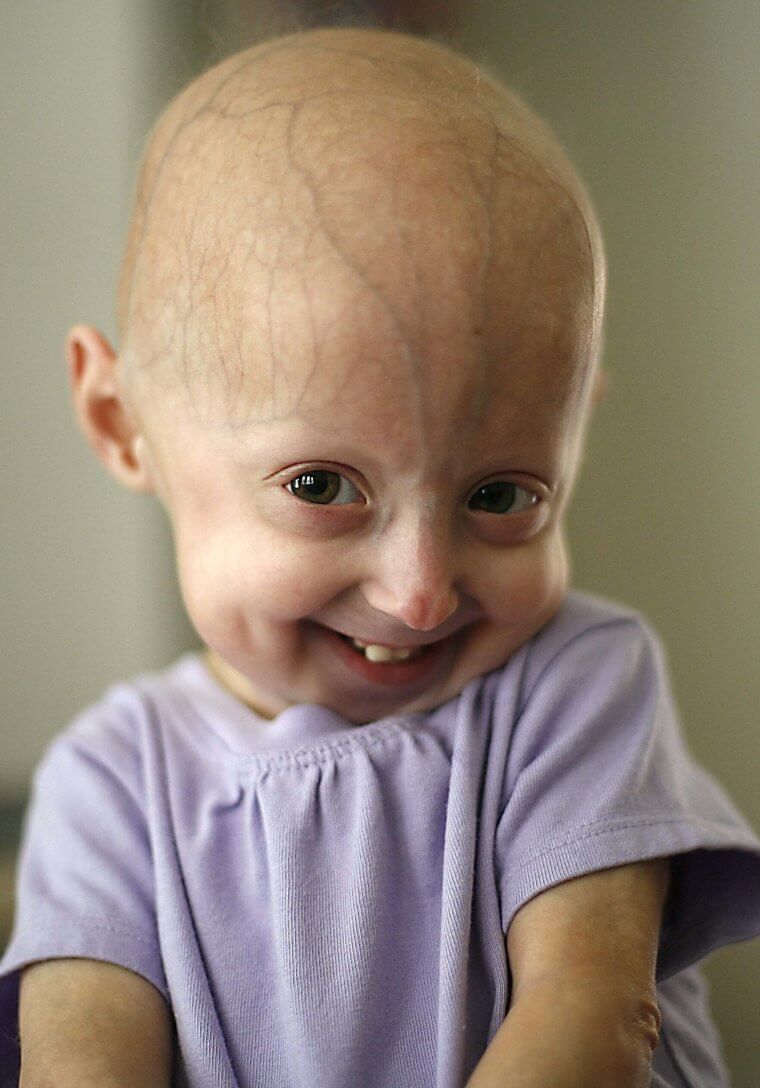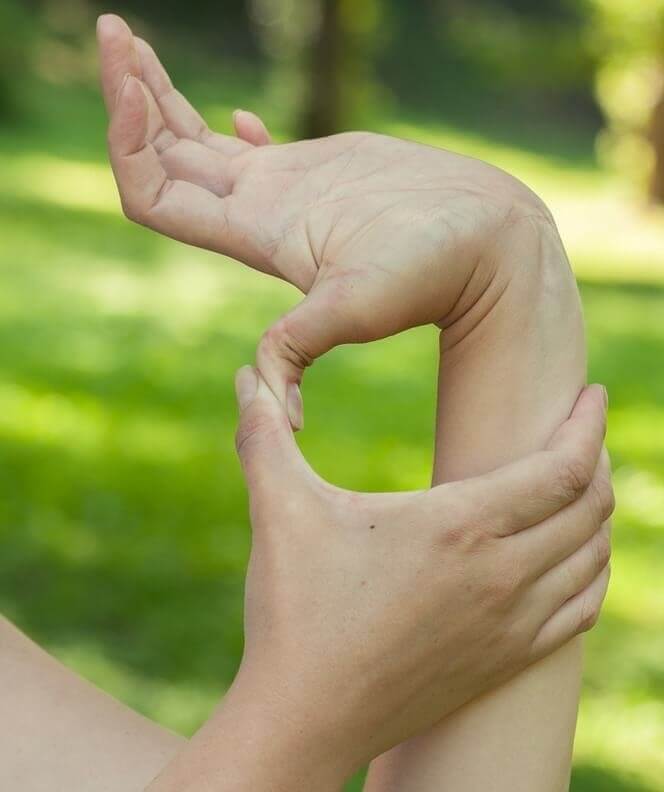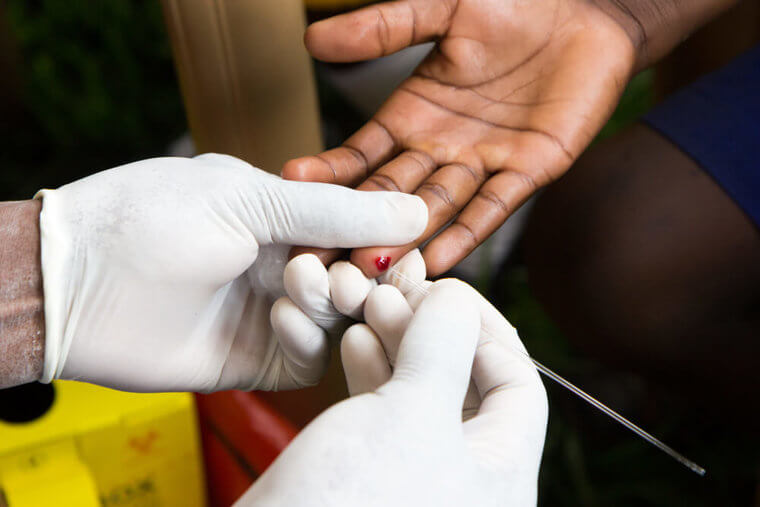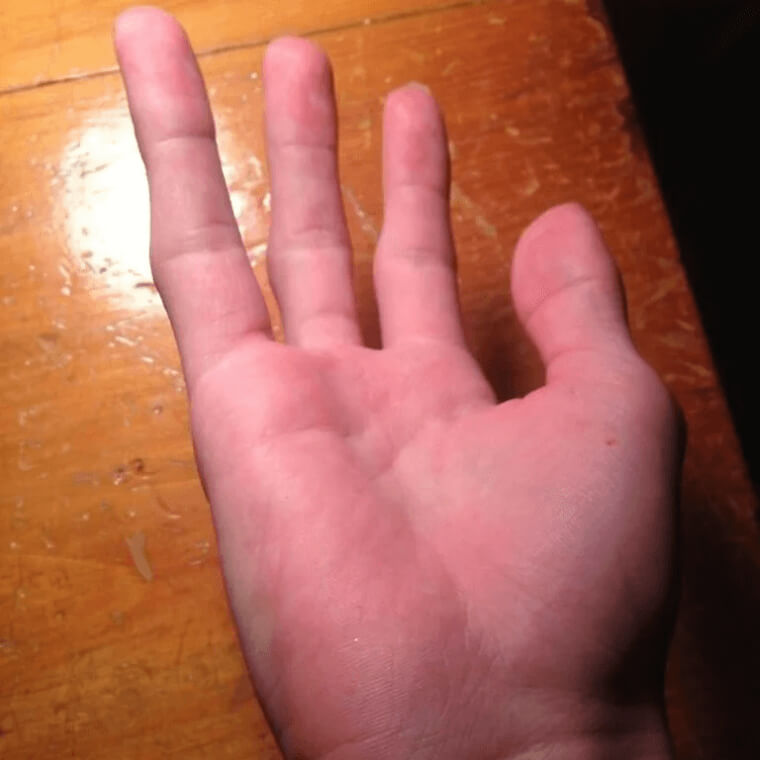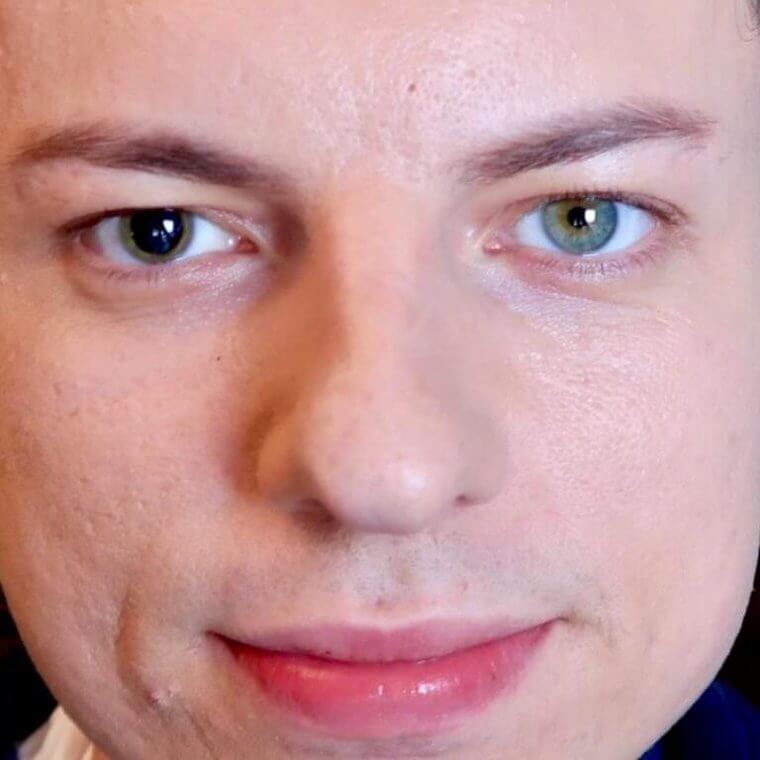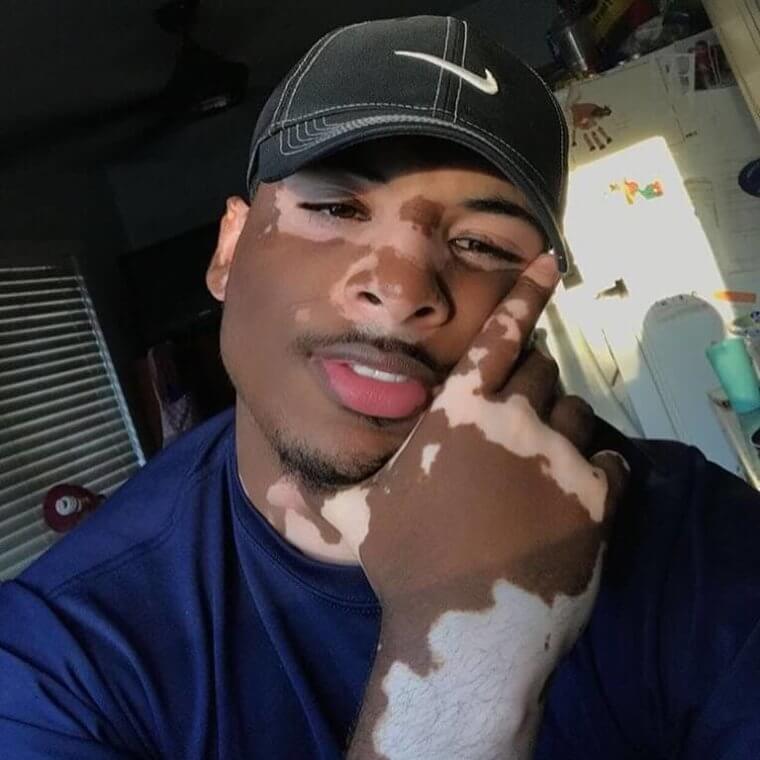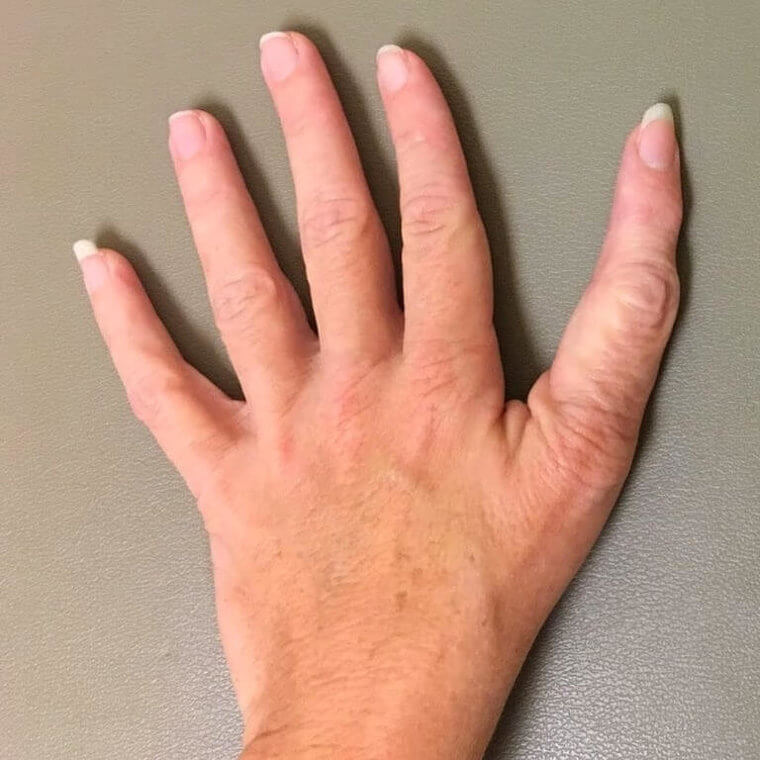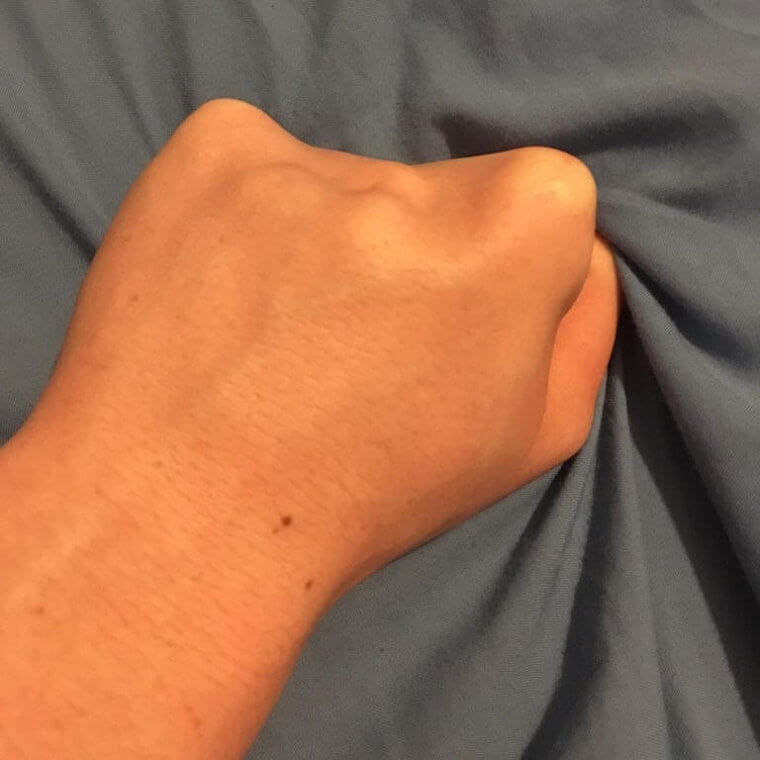One In 200 People Have An Extra Rib
While most people have 12 pairs of ribs equaling 24 total, some people occasionally have a 25th rib. About one in every 200 people have a rare body feature called a cervical rib that forms above the first rib, growing at the base of the neck and above the collar bone.

It's possible to have one without knowing it because it is not painful. The extra rib sometimes doesn't fully form and can be a thin strand of tissue fibers that won't show up on an X-ray. Can you imagine not knowing you've had an extra bone all these years?
Only 2 Percent Of The World Has Red Hair
While you might know many people with red hair, natural redheads are rarer than you think. Out of the entire global population, only two percent of people are born with red hair. It is slightly more common in people with ancestry from northern and western Europe.
Red hair is a recessive gene, so both parents need to have the gene for a child to be born with red hair. There are actually a disproportionate amount of redheads in American pop culture, but they only make up a tiny proportion of the population.
Less Than One Percent Of The World Has Grey Eyes
While some traits are seen commonly but are considered rare, this eye color is rarely seen. According to the World Atlas, less than one percent of the world's population has grey eyes. This occurs when there is a low level of melanin in the front layer of the iris.
The chances of meeting someone with grey eyes are slim, but they are usually more prevalent in places where green eyes are common. The only rarer color is red or violet eyes, which are caused by other conditions.
Only 40 People Have What People Call "Golden Blood"
Golden blood is not quite what it sounds like. Rather than actual golden blood, it's an incredibly rare blood group that only 40 people in the world have. In scientific terms, people with golden blood are missing Rh-blood cell antigens.
Because they don't have Rh-blood cell antigens, anyone with another rare Rh group can accept this type as donor blood. These people are incredibly valuable to the medical community, and if they didn't exist, it would take much longer for people with rare blood types to find a donor match.
Some People Have A Gene That Naturally Regulates Their Cholesterol
While many people have to work hard to keep their cholesterol under control, some people will never have to worry about it. Those people have a gene mutation of the PCSK9 gene. It provides the gene with instructions for making a protein that helps regulate the amount of cholesterol in the bloodstream.
It is so rare that it has only been found in two people. Some people have a single mutation, which still regulates cholesterol levels, but not as efficiently. This would be such a convenient thing to have because you never have to worry about high cholesterol.
Someone's Cold
You have probably experienced a tingling feeling when your fingers are cold in the winter, but it fades when you get warm again. Some people are left with white and numb fingers for longer than usual.
This can happen because of limited blood flow in cold temperatures or stressful situations. It looks like someone dipped their hand in white paint, and we wonder if they can still feel their finger because they look like they are going to fall off.
Less Than 1 Percent Of People Have A Sinus Tract... Above Their Ear
Although it looks like an ear piercing, it is actually a congenital condition that causes a small hole or dimple above the outer ear. It is usually found on top of the ear, where it connects to the side of the head. It's mostly harmless, although it can be susceptible to infection.
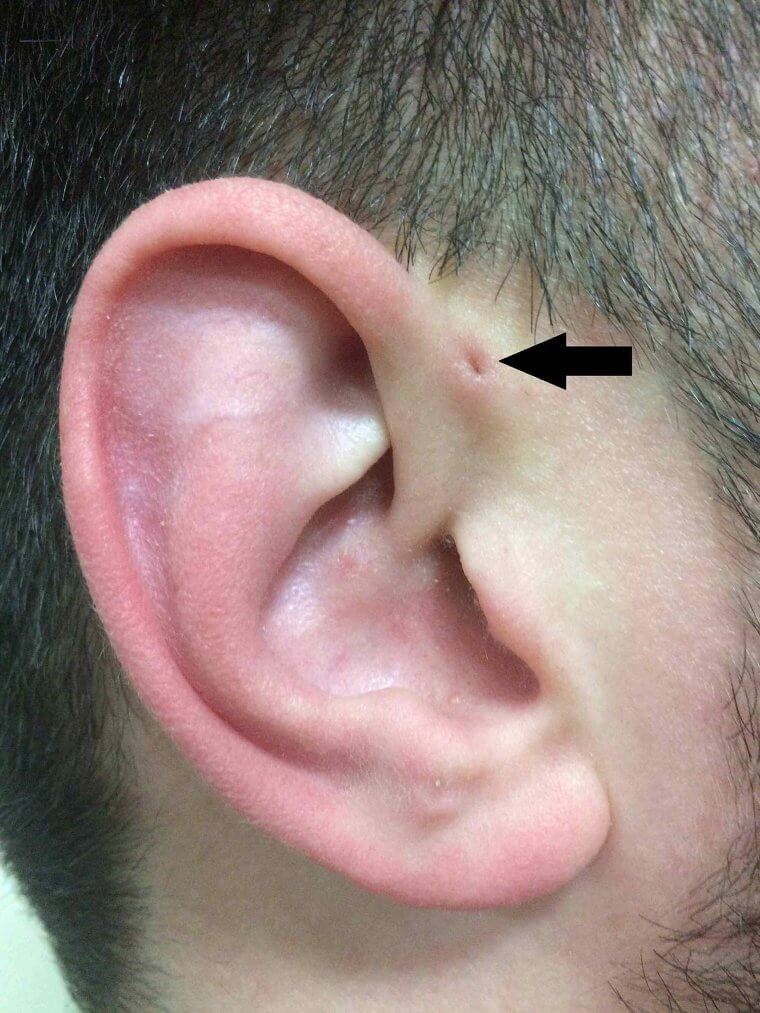
It's not common in the West, where it is found in less than one percent of the population. Scientists believe it was once a gill, but sadly you can't use it to breathe underwater.
A Few People Can See 100 Million Colors
Our ability to see color is all thanks to the three cones in our eyes. However, there is a small percentage of people called "tetrachromats" who have a fourth cone.
These people are able to see 100 million colors, which must be amazing. However, it is apparently not a fun experience because it is a sensory overload. Despite seeing so many colors, one person with this rare feature said her favorite color is white.
Ocular Albinism Is Only Found In 1 Out Of 50,000 People
Albinism is often lumped into one category, and you may not know that there are actually different types of this condition. One type of albinism is ocular albinism, which can affect the hair and skin, but it primarily affects the eyes.
The condition causes people to have light eyes, it can reduce vision, cause sensitivity to light, and other eye conditions. According to the Vision of Children Foundation, about 1 in 50,000 people have ocular albinism.
Have You Ever Heard Of "Elf Ears"?
No, this woman is not an elf, but she does have elf-like ears. This is caused by a condition known as Darwin's tubercle. It is common in Spanish, Indian, and Swedish people. Scientists do not know why this happens.
At least if she ever wanted to make some money as a seasonal worker at the mall, she could easily get a job as Santa's helper, and she wouldn't have to put on fake ears. That's a small win in our book.
This Rare Genetic Mutation Causes People To Grow Extra Rows Of Eyelashes
Many people get eyelash extensions to have full and long lashes. This girl does not need extensions because her eyelashes grow in multiple rows. The condition is called Distichiasis, and it can be seen as a full set of second lashes or one single lash in a different row.
Elizabeth Taylor had this mutation, and people always assumed she just had voluminous lashes. However, before you get too jealous of people with this condition, it can cause tearing, eye irritation, and sometimes it impacts the person's vision.
Only 25 Percent Of The Population Can Be Categorized As Super-Tasters
Science has shown us how genetics can play a role in all aspects of our life, even altering our taste buds. Only about 25 percent of the population can be categorized as "super-tasters" who have more visible taste papillae (the tiny dots on the tongue) than non-tasters.
This rare body feature makes "super-tasters" more sensitive to the taste of certain foods like those that taste bitter, sweet, or salty. These people generally do not like spicy food because they are more receptive to pain.
Outie Belly Buttons Are Actually Really Rare
Chances are, you are one of the many people that have an innie belly button. It is much more common for people to have innies, and outies are rare and only found in 10 percent of adults. Contrary to popular belief, the navel doesn't depend on how the umbilical cord is cut at birth.
The thing that determines the belly button shape is how the scar heals afterward. Some people go as far as getting revision surgery to correct their outie belly buttons even though there is nothing wrong with an outie.
There Are People Who Have Unbreakable Bones
Have you ever broken a bone before? If you have, you might be jealous of those people who have a gene mutation that makes their bones almost unbreakable. The gene regulates the production of a protein that plays a role in bone density.
The mutation was discovered when a man involved in a serious car accident didn't suffer any fractures or broken bones. Researchers found he had an unusually strong skeleton, and his bones were eight times denser than the average person.
Some People Are Born With Two Different Colored Eyes Because Of A Rare Condition
You have probably never thought twice before filling out your eye color on an official form, but this simple question is a little more complicated for people with heterochromia. There are three types of this condition: complete, central, and partial.
This girl has complete heterochromia, where the eyes are two completely different colors. It is most often a genetic mutation, but it can occur due to various medical syndromes or an eye injury. Fewer than 200,000 people have this condition in the US.
A Select Group Of People Are Born Without Wisdom Teeth
If you have dealt with the pain of removing your wisdom teeth, this might frustrate you because some people are born without them. In fact, 20 percent of people don't have wisdom teeth, which is considered a normal variant.

The occurrence varies across different populations. For example, 100 percent of indigenous Mexicans are born without them, while almost all Tasmanian aborigines have them. That would have saved us a lot of pain.
Long Palm Muscles Are Passed Down From Our Ancestors
This is one of the things you might not know you have. The rare body feature is called palmaris longus, and it is a muscle that helped our ancestors climb trees. We don't use it anymore, but some people still have it.
It can be used for a tendon graph, but functionally it is utterly useless. If you want to see if you have it, put your arm on a flat surface, then touch your thumb and pinky finger, it will pop out of your wrist.
The DEC2 Gene Allows People To Sleep Less And Work More
People like Nikola Tesla, Margaret Thatcher, and Winston Churchill had this problem, even though it wasn't really a problem; some may even call it a blessing. The DEC2 gene allows people to go through the sleep cycle in less time than most of us.
It's no surprise these people used the extra time to achieve greatness. Between one and three percent of people can exist on virtually no sleep with few negative side effects. Some people call it the "clock gene" because it allows them to stay awake longer.
A Deficiency Keeps Away Heart Disease
We all have the PCSK9 protein gene in us. However, a small amount of the population has less of it, and the deficiency reduces the risk of heart disease by 90 percent. Some people struggle with this, which also means these people don't have to worry about their cholesterol.
It would be so nice to have this deficiency because that is one less thing to worry about in life. We wonder if someone could have this even if heart disease runs in their family because that would put their mind at ease.
This Mutation Creates Very Strong Children
While it is well documented in mice and cattle, there have only been a few cases of inactive myostatin genes in humans. The condition causes people to develop incredibly strong muscles. Children who are born with the mutation have lean, well-defined muscles from a young age.
Those who have it, possess greater strength than children of a similar age. It is so rare that researchers don't even know the long-term issues associated with the disorder, so we won't know how it can affect them later in life until these children grow up.
Only 8 Percent Of People Have Blue Eyes
While grey eyes are the rarest color, blue eyes are also only found in eight percent of people. It seems like everyone who has blonde hair also has blue eyes, but they can all be traced back to a single common ancestor.
Scientists tracked down the genetic mutation which took place 6,000 - 12,000 years ago, and it is the reason for all the blue-eyed people on the planet. They are much more common in Scandinavian countries.
Morton's Toe Structure Is Very Rare
Morton's toe, or Greek feet, is the condition where the big toe is smaller in relation to the first toe. Only ten percent of people have Morton's toe, and surprisingly, the Statue of Liberty had feet like this.
It is called Greek foot because it was the idealized form in Greek sculptures, and this persisted as an aesthetic standard through the Roman and Renaissance periods and later.
Only 8.4 Percent Of People Have A Counterclockwise Hair Whorl
This is something you might not notice, but only 8.4 percent of people have a counterclockwise hair whorl on their heads. If you belong to the ten percent of the left-handed population, the chances are higher that you will have counterclockwise hair.

You might want to start checking the back of people's heads because you could find something that is much rarer than people think. It would be nice to tell someone how special they are.
Sneezing Because Of Sunlight Is A Thing, Although Not Very Common
If you have ever sneezed because it was too sunny outside, you are part of a small group of people who have a photic sneeze reflex. About 25 percent of people have an unusual reaction to sunlight, and it can actually be dangerous.
Some consequences of PSR are that it is dangerous to drivers when emerging from dim light, such as a tunnel into full sunlight. If you have reacted to sunlight like this, you could have PSR, and you probably never knew it.
Having A Single Crease Through The Palm Is Hereditary
You know how your hands look like they have a bunch of lines on the palm? Well, this guy has a one-way street. Whoever gets to be his palm reader has a pretty straightforward job, right?
This is something that is only found in 1.5 percent of people on at least one hand. It is also referred to as a simian crease or simian line.
Just 5 Percent Of People Have Arch-Shaped Fingerprints
It might be hard to tell when you look at your hand, but there are three different types of fingerprint shapes, and arched ones are the rarest. Other people have looped-shaped and whorl-shaped fingerprints, which are things you would never know about a person because you can't see them.
It is even possible to have different shaped fingerprints on each finger because each finger has a different print. The ridges that create our fingerprints not only identify us, but also help us to hold onto things.
Some People's Hearts Are On The Right Side, Literally
One out of 12,019 people is born with their heart on the right side of their chest instead of the left. The congenital anomaly is called dextrocardia and usually doesn't have any negative consequences; however, there is a possibility it could affect other organs.
Most people live normal lives with this condition, and you can guarantee their heart is always in the right place. Although there might be blockages in the digestive system because of the position of the heart.
These Amish People Will Probably Live Longer Than The Rest Of Us
Amish people are somewhat of a mystery because they keep themselves closed off from society, and no one really knows what happens in their communities. However, a 2017 study found that they have a gene mutation that stops blood clots from forming.
The result is that those who carry the mutation can live up to ten years longer, and they have a smaller chance of suffering from chronic illnesses like heart disease. Therefore, Amish people will probably live longer than us.
Constant Body Odor May Be Unpreventable For Some
Body odor is one of the most embarrassing things because you can do nothing besides showering to get rid of the smell. Unfortunately, some people suffer from a genetic disorder that causes them to emit an unpleasant smell constantly.
The result is that the person with this genetic anomaly will suffer from a strong body odor that smells similar to rotting fish. Thankfully less than one percent of people have this mutation, making it a rare occurrence.
A Few People Have Excess Hair Growth
While some people need to do extra grooming because they naturally grow a lot of hair, some can't control the amount of hair that grows on their bodies. A genetic skin condition called Ambras syndrome causes people to have excess hair all over their bodies.
While it may be isolated to certain areas of the body, it often covers them entirely with thick hair. It has only affected about 50 people since the Middle Ages. The gene mutation disrupts messages sent to the cells about developing follicles.
A Rare Disorder Causes Accelerated Aging
Many people will do anything to stay youthful throughout their lives, but others can't help it. Due to a genetic disorder called Progeria, some people age at a remarkably quick rate. Symptoms usually become noticeable within the first two years of their life.
People who have this disorder suffer from excessive hair loss, as well as thinning and wrinkling skin. Their life expectancy is typically only 13-20 years, and scientists haven't found a cure for it.
Tibetans And Nepalese People Inherit A Special Gene That Lets Them Breathe At High Altitudes
When someone embarks on an expedition to the top of Mount Everest, it is common for them to bring along a Sherpa to help them guide the way to the summit. These guides can contribute more than just navigation help, as native Tibetans and Nepalese people are uniquely able to breathe at altitudes that make most people sick.
This unique ability has been linked to a "superathlete gene" that can be traced back to a group known as the Denisovans, who lived in mountainous regions around Asia from 40,000 years ago. This helps the body to distribute oxygen more efficiently.
Marfan Syndrome Makes Your Ligaments Stretch Out
While some people are pretty flexible, other people have a syndrome that causes their ligaments to stretch out. Marfan syndrome affects the connective tissue and causes people to be tall, lanky, and have elongated limbs.
For those severely affected, it can affect their heart, eyes, blood vessels, and skeleton. It can cause bones to dislocate easily, strain the aorta, and give them early onset arthritis. About one in 5,000 people are born with this genetic mutation.
There Are People Who Can't Contract HIV
HIV has killed millions of people, and during 1981, it was an epidemic. However, a small group of people of Northern European descent may be resistant to HIV because of an incredibly rare genetic mutation called CCR5 delta 32.
This abnormality does not allow the HIV virus to enter the cells. The receptor is closed, and scientists have been working on a cure using stem cells to mimic the genetics of those immune to HIV.
There Is Mutation That Causes People Not To Have A Pinky
Instead of extra fingers, this person has only four fingers on their hand. This occurs because of symbrachydactyly. This occurs in the womb because of a lack of blood flow to the tissue while the fingers are forming.
The pinky finger is pretty useless anyway, so they are not missing out on much. At least they have their thumbs because that is the most important finger. We wonder if they have problems holding things.
This Person Only Has One Functioning Pupil
This man has something called anisocoria. It is a symptom in which one pupil is functioning normally, and the other one is always in a fixed position. His pupil is permanently dilated while the other one works normally.
People have probably wondered if he was on drugs or having problems before because this is such an uncommon condition. It is usually harmless to the person affected by it, and we think that it looks pretty awesome.
This Mom And Daughter Have The Same Birthmark In Their Hair
They must be asked if they are Sweeney Todd fans often because he famously sported a similar grey patch. However, these white patches are from a disorder called Poliosis. The hair follicles stop growing with color because the melanin is not being produced in these areas.
Some people have to dye their hair to achieve this look, but these lucky ladies have a feature that is sure to turn heads wherever they go. It's safe to say who has the strongest genes in the family.
Vitiligo Makes Him Unique
This man has a unique vitiligo pattern, which is a melanin deficiency that causes the skin, hair, and nails to lose pigmentation. It's like he is a superhero, and his mask is always on, ready to save the day.
Did you know Michael Jackson started wearing his famous glove to cover up the vitiligo spreading on his hand? He ended up bleaching his skin to make it all one shade after the vitiligo spread more.
Thumbs Down
When you see the word phalange, you might be thinking of Pheobe from Friends' fake name, Regina Phalange. Here, we are not talking about Pheobe, but the parts of fingers.
This person's thumb has three phalanges instead of two. A phalange is a bone in the fingers and toes. Sometimes an extra one can be small and unnoticeable.
Two Of His Knuckles Aren't In-Line With The Rest
When you make a fist, your knuckles should line up next to each other. However, this person's hand is different, though, because his knuckles in the middle are lower than the rest. It is not a common occurrence, and we have never seen this before.
You might think he punched a wall too hard, but it is caused by a double joint in the knuckle. It usually only occurs on one hand, but it should cause any issues besides trouble punching things.


